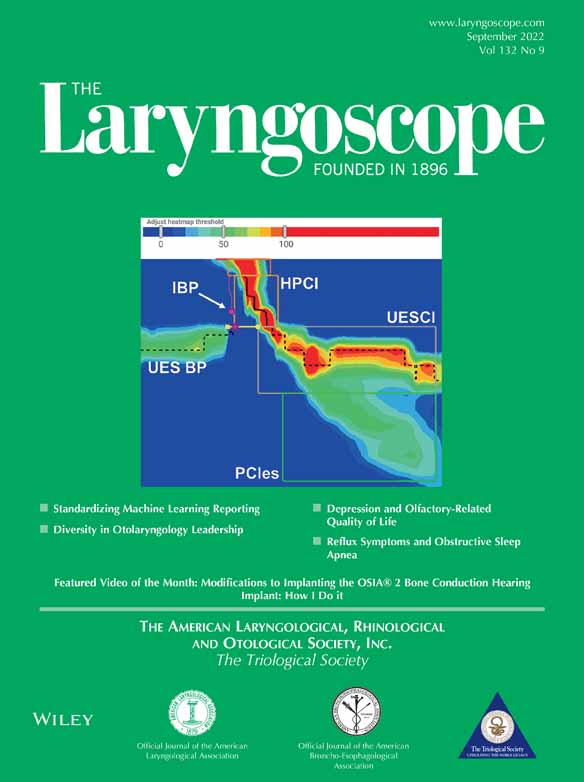Haller's Ansa: An Unrecognized Route of Facial Movement After Skull Base Surgery
Editor's Note: This Manuscript was accepted for publication on October 14, 2021.
Presented at the Triological Society Section Combined Otolaryngology Spring Meeting, Virtual, April 7–11, 2021.
The authors have no funding, financial relationships, or conflicts of interest to disclose.
Abstract
A direct communication between the glossopharyngeal and facial nerves known as Haller's ansa exists in a minority of patients. Clinical manifestations of this anastomosis are not commonly observed. We describe post-operative facial movement with swallowing after facial nerve sacrifice in two patients who underwent surgery for skull base tumors. Patient 1, a 49-year-old male, received a transcochlear approach for resection of endolymphatic sac tumor and intratemporal facial nerve sacrifice without nerve reconstruction. Patient 2, a 23-year-old female, underwent surgery for left jugular paraganglioma, requiring facial nerve sacrifice and cable graft. Both patients had preoperative facial weakness and intraoperative preservation of the glossopharyngeal nerve. A literature review related to Haller's ansa was performed using PubMed, EMBASE, and Scopus from 1920-2021. Post-operatively, both patients demonstrated oral commissure movement with swallowing, suggesting a communication between the glossopharyngeal nerve and the facial nerve (Haller's ansa). Although anatomical references to Haller's ansa exist, there are no reported clinical manifestations of this neural anastomosis. Glossopharyngeal-facial nerve communications may contribute to facial tone and movement. Pre- and post-operative assessment of facial nerve movement with swallowing may help assess for the presence of Haller's ansa. Better understanding of this neural anastomosis may have implications for facial reanimation surgery. Laryngoscope, 132:1750–1752, 2022




